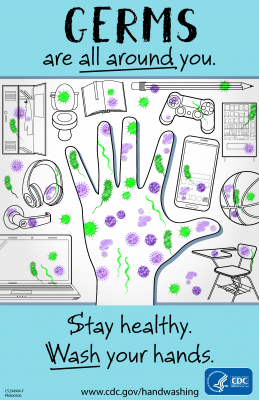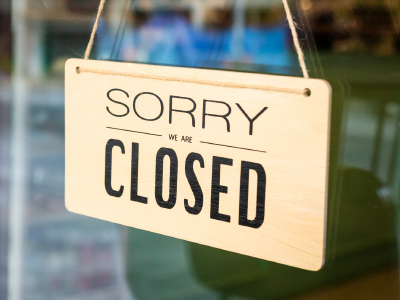At this moment, most of the world is under threat from COVID-19, the disease caused by novel coronavirus / SARS-CoV-2, which is dramatically altering social behavior in ways that we may not fully appreciate. Several countries have initiated physical distancing protocols (“social distancing” is a potentially dangerous phrase psychologically, but more on that later), which have slowed or completely stopped most economic and society activities. It’s this last point that could mark a major shift in how we operate as a global economy, and in particular how the U.S. emerges as a very different player in that economy.
After observing a near-complete shutdown in major U.S. cities such as San Francisco, Los Angeles, Chicago, and New York, I am starting to see four emerging trends in what our world will look like when COVID-19 moves into the rear view:
- Changes in how we think about cleanliness
- Rise of contactless payments
- Continued surge of video conferencing
- Slow demise of dine-in restaurants
I know there will be many other changes, especially in how we think of healthcare delivery and management, and I invite those thoughts and comments below as they may spark future posts. But let’s start discussing these four, in order.
1. Changes in how we think about cleanliness

There is no way to sugar coat the fact that we’re all washing our hands incredibly incorrectly. From overall duration, to worrying too much about type of soap, to not even washing at all in certain situations, each of these poor hygiene habits is being pressure tested with the rapid spread of coronavirus.
In the first 2 weeks of COVID-19 in the U.S., back when the reported case number was only two digits nationwide, I recall seeing the hand soap, household cleaner, bleach, and portable cleaning wipes sections of the stores completely decimated. (I wonder what everyone was using to clean themselves and their homes before coronavirus?) It was a signal that the paranoia about cleaning everything was just beginning to set in.
I do hope the hand washing guidance becomes ingrained in memory, as that’s just good practice always. And while I believe bleaching your home frequently is overkill in most situations, it makes sense to keep commonly-touched items such as doorknobs clean. Therefore, this first category is a fairly easy prediction to make.
2. Rise of contactless payments

With increased cleanliness in retail locations – Target is one great example – there is a sense of hesitation during the checkout process when the consumer hands the cashier a credit card, a stack of currency, or any other form of payment. That payment is handled a few times over during the transaction, and with what we know from the New England Journal of Medicine about viral resiliency on surfaces, even if you put it in a cash drawer or your wallet, the virus stays alive.
This could be the watershed moment for contactless payments that economists and bankers have been hoping for years. By simply waving your phone, Apple Watch, or similar device, you can pay for all your items without needing to touch a contaminated surface or potentially receive a contaminated piece of currency.
3. Continued surge of video conferencing
Zoom recently went public, attempting to unseat the dominant players in video conferencing: WebEx, GoToMeeting, and Skype. And so far, that seemed to be happening even before COVID-19. But what is amazing from a market perspective, Zoom’s stock continues to rocket higher even as the broader market is down significantly. Not a single data point has been formally released as of the time of this post, but investor conjecture says that employees being forced to work from home are flocking to Zoom, WebEx, GoToMeeting, and other video conferencing software packages to keep in touch.
Like most economic shocks, this is easily one that could abate once everyone returns to their in-office workdays and doesn’t need to rely on video conferencing as much. But there are two macroeconomic trends afoot here: 1. Remote work may become more commonplace as companies quickly learn that their employees’ work can get done even if they’re working remotely (thereby improving employee satisfaction and saving precious fixed costs like office space), and 2. The global travel industry is undergoing a near-universal shutdown at the moment, and video is stepping up as a viable replacement to some in-person meetings. (It pains me to write this, as I’m one of the people who far and away prefers an in-person meeting vs. a video call, but the data about employee adoption of video calls don’t lie.)
4. Slow demise of dine-in restaurants

While many industries are being rattled as a result of COVID-19, the restaurant industry was among the first to feel the impact (along with event management and travel), as shown through the precautionary closings before country and state mandates which were swiftly followed by orders to close anyway. It is heartbreaking to see family and friends without jobs, especially when there is so much uncertainty as to when the industry will return to “normal”.
What makes the situation even more interesting is the fact that some restaurants are still open and catering to take-out and delivery orders, with many of those orders being served by the gig economy of DoorDash, GrubHub, and a variety of other 2-word mashups. Some restaurants need to follow distancing and crowd management protocols, and delivery services satisfy both those requirements. Much like contactless payments, these delivery services have catered to a subset of the mainstream consumer, but never really had their moment to shine. Now they are the only option for obtaining food conveniently, and the restaurants who have embraced those services will continue to generate cash flow to fuel their full reopening.
The interesting hypothesis that arises, though, is whether consumers will start to prefer getting the same food and enjoying it at home, generally at a lower cost (less gratuity, less spent on drinks, etc.)? Restaurants are a mainstay of our global social fabric, so I don’t see this changing rapidly, but with each generation comes a new way of thinking of the world, and COVID-19 may be the catalyst to change how restaurants operate.
Until the next post, I hope you and your loved ones stay safe and healthy, and be sure to wash your hands!




